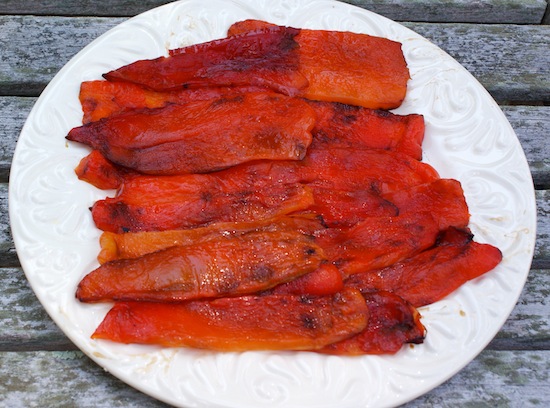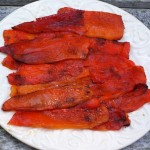
My journey into grain-free eating emerged from years of dealing with chronic sinus problems and headaches. As a chiropractor, I get adjusted all the time, but it still was not helping my headaches. Even though my neck would need the adjustment, the real source of the problem was my sinuses getting inflamed — sinusitis. If you have this, you know it can be debilitating.
As far back as I could remember, I had headaches. I would cry to my mother about them and have to lay down on the couch to get relief. She would mash up an aspirin tablet on a spoon with a little water and I had to take that nasty stuff to feel better.
After years of taking aspirin for my headaches as a child, I realized that it had caused damage to my stomach. As I went through high school and college, I became passionate about not taking medications and finding natural ways to address health problems.
I’ve been a nutritionist and chiropractor for over 20 years. In that time, I’ve tried many dietary approaches with the goal of improving health conditions. The conclusion I’ve drawn from this is that some will work for some people but not every diet will work for everyone. One size does not fit all. That being said, I have found the grain-free diet to work much of the time for many people.
For my sinus problems and headaches, it worked a miracle. The only time I get sinus congestion and the resulting headache is when I go off the grain-free diet for a few days in a row. Generally, I am on the diet 100%.
The Specific Carbohydrate Diet was the first grain-free diet I started. I discovered SCD from a patient’s young daughter who had ulcerative colitis. The patient started the diet at my urging because I thought it could help her heal. At the same time, I realized it might also help my own problems with leaky gut (as a result of taking aspirin for headaches) and sinus problems. So we started it together!
Other grain-free diets such as GAPS, Paleo or Primal are also great. At this point, I combine all of these diets along with the principles of the Weston Price Foundation as my eating guide.
Roasted Peppers (Video Demo)
Here is a recipe for roasted peppers and sample video from the class. It includes how to prep and cook red peppers to make them more digestible and really delicious! Note that peppers are a nightshade vegetable, and so those sensitive to them or on the AIP diet should avoid.

Roasted Red Peppers Recipe
Easy recipe for roasted red peppers that can be used with yellow, orange and green peppers too. Use as a healthy side dish or as a base for fermentation into a probiotic rich food.
Ingredients
- 5 fresh red peppers preferably organic
Instructions
-
Clean the red peppers.
-
Cut them in half vertically along the crevices and remove the seeds and membrane.
-
Flatten them out on a cookie sheet, skin side up.
-
Place on a high rack in the oven just under the heating element.
-
Roast at 500 F/ 260 C for 10 minutes or until the skins are blackened.
-
Remove from oven.
-
Place the peppers in a glass bowl and cover. Or, if you covered the cookie sheet in foil, wrap them up inside the foil and leave on the cookie sheet to steam. Leave for 10 more minutes.
-
Open the foil or remove the cover from the bowl and allow the peppers to cool.
-
Place the peppers on a cutting board or other flat surface and using a knife, easily peel off the skins.
-
Place the peppers in a jar and refrigerate. Use within one week.
Recipe Notes
Use another type of pepper if desired - orange, yellow, and green all work well using this recipe for roasted peppers.








This is very tough but it does work wonderfully to eliminate unwanted bloating, gas and excess stomach fat while healing your gut really quickly!
My questions is for my daughter she is gluten intolerant but also allergic, touch sensitive to all nuts. How can she incorporate grain free and still be nut free. Many recipes use nut flour. I am sure this would help her myriad of issues.
It sounds like you need to just be vigilant about giving her good meat, organic veggies and fruit, and good dairy products like whole raw milk and pastured eggs. If your daughter is that sensitive, there isn’t much else you can do. Is she ok with coconut? There are some good GAPS recipes that use coconut flour. Search real food and grain-free blogs on the web. If she can handle starches, rice flour and potato starch might be options for you. But don’t despair; MANY people are ditching grains altogether. Its hard at first but you get used to it. Then when she improves you may not want to go back! My celiac son went to school this year and found his teacher is also celiac. He was relieved to know someone at school knows what he is going through. She said to him, “I eat lots of meat and veggies! Is that what you eat?” He exclaimed, “YEP!!”
Well, I still want to know if PROPERLY prepared grains are okay in moderation. I do not have (known) gut issues and I seem to be able to eat grains moderately without adverse effects. I am trying gluten free for my family’s sake and I want to begin preparing grains properly, but, most importantly, I want to KNOW what is really best. I appreciate any help in understanding all about this issue. Thanks!
Of course .. grains are fine. I eat them myself as do my children and husband.
The point of Jill’s story is to say that some folks need to go grain free to heal and some of those find they are unable to transition back even after a period of healing.
There is no one right answer here. There are grain free traditional diets and traditional diets that included grains. Our challenge is to determine through observation what is the best route for us.
This is the next step for me. I feel so much better but still sluggish.
I have had great success with going grain-free and using GAPS for my health issues. I’ve been mostly grain-free for 7 years, with the exception of properly prepared sourdough sometimes.
I think we have to be very careful about grains, and in particular, wheat. Although properly prepared grains are one of the foods used in the WAP diet and was something Dr. Price observed populations consuming that were healthy, there are a variety of factors present in today’s food supply and our collective health condition that weren’t present during that time. People’s DNAs have changed substantially due to the massive influx of chemicals and toxins from the food we eat and the environment. Most people as well do not have good gut health for these reasons. Wheat has also been altered substantially and hybridized to contain a much higher gluten content (from gliadin, the protein that comprises gluten). Gluten makes bread elastic, and this trait has been highly sought after for better breads, pastries, and other foods that people love to eat. Our bodies cannot recognize these substances properly because they aren’t natural.
Then there’s the GMO component. Although there have been no official approvals of GM wheat crops in the U. S., Monsanto and other seed companies have test plots all over the nation, and those simply cannot be contained – even though Monsanto claims co-existence is not only just fine but possible. Because we’ve certainly got contamination issues to deal with, this is a big problem. Already with alfalfa, there is widespread contamination. A group I work with here in ID called GMO-Free Idaho works with a farmer who has performed independent tests on feral alfalfa here in our state, and found that 9 out of 10 samples were contaminated. So the idea that our grains and in particular, wheat, is going to process the same in our bodies when everything is so different now is simply not valid.
I’ve read testimonials of people who have eliminated GMOs from their diets and realized vast improvement in different health issues from digestive problems such as colitis, IBS, Crohn’s, to skin problems, auto-immune issues, food allergies, and fertility disorders.
My ND believes that many chronic health issues that have been on the rise such as auto-immune disorders including diabetes, obesity, cancer, and many digestive problems are definitely affected by GMOs. And it’s no wonder – there was a sharp increase in these problems just after the inception of GMOs in our food supply, during the late 90s.
I’m glad there are people like Jill offering an online grain-free course for those who are unfamiliar and who may be long-time sufferers of chronic health issues. My hope is that these types of educational tools will help many people who haven’t had success trying to discover why they are sick, and who have sought conventional medical treatments with no avail.
Well said, Raine! Not everyone can eat modern grains, and none of the peoples studied by Dr Price ever ate the modern, modified grains that are sold in the US today.